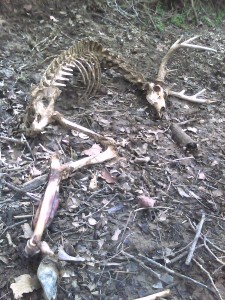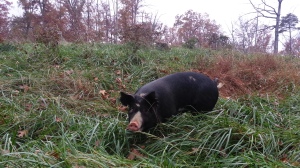What follows is the first part in a six part series where I will attempt to elaborate on six key principles that inform the way we approach land: specifically how we farm, and seek to farm in the future. I believe that if more eaters were to connect their food to the land through an understanding of these concepts it would promote human and ecological health, flourishing, and regeneration. I would ask the reader to see that the ideas expressed here are real, and grounded in ecosystem function in ways that support human flourishing. But they are also aspirational. My farming doesn’t wholly submit to these principles. But I am working on it. I first wrote about these six points here: http://brokensidewalk.com/2015/farmers-and-local-food/ and kicked off this series here: What does our local food economy need?
- The act of producing food can have the capacity to rapidly degrade, slowly degrade, or regenerate land: above-ground and subterranean ecosystems. There is no current labeling system on your food for this.
This is one of those things that seems on it’s face to be so simple. But what I believe thinking about this idea can do is challenge the concept of “sustainability”. Although for something to be able to hypothetically sustain itself on a long time horizon (say, until the sun burns out) is a worthy goal, the concept conjures up an idea of a system which neither degrades nor regenerates, but sort of stays on an exact point along a continuum over a long period of time. Can a marble sustain itself on the rim of a glass? Maybe for a time. But it will probably go more in or more out pretty soon. What I want to point out is what I don’t think is commonly enough considered: a complex system, such as an ecosystem, is not capable of remaining at a static point indefinitely. There are too many living, moving parts for it to do that.
So how do you even define regeneration and degradation? I like what Ben Falk, Author of The Resilient Farm and Homestead has to say: “A force is regenerative when it accelerates the process of transforming mineralogical matter into complex living organisms.” Or to elaborate, more total mass of greater total numbers of more diverse things living in one place is better than less mass of less total number of less diverse living things being in that place. Is the human interaction with the land moving toward or away from regeneration? I want my interactions to move the land I farm toward regeneration for many reasons. But mostly because I eat living things, and my wife and I are outnumbered by our children, all of whom eat living things. Because we love them very much, we want them to live in a world that can support the health of their bodies and even their children’s bodies. All those living things out in the garden, forest, field and pond either harvest energy from the sun, or eat and poop living things and get eaten eventually by things that eat and poop and get eaten (I could go on, but you get it); and their decaying bodies provide the extremely complex necessities of life for future generations of living things. To connect the logical loop you need not forget that my wife and I and our children are living things too, and we eat some of the animals, plants, and fungi that grow on land. You, and your children too, likely eat from these same categories of things.
If you were to look at a corn field in September a mile from our farm, you would see a pretty good amount of biomass: There is a lot of water and carbon fiber standing tall and green. But it is by design a very monolithic un-diverse place. And despite the way there are thousands of corn plant individuals packed into an acre, this land would have far fewer living things on it than more mature, regenerated land -a few square feet of forest floor might contain more organisms than an acre or more of land that has had many mechanical and chemical treatments applied to it for the purpose of excluding all non-corn life. I would also argue that the massive show once a year sheer mass of weight of living stuff in September, when measured alongside the formerly living stuff -in crop residue off-gassing into the atmosphere or running down stream- and in nutrients removed at harvest, (to say nothing of tractor fuel, natural gas (also formerly living stuff) used in fertilizer production) isn’t actually impressive at all. So the corn field report card goes something like this:
Living creatures census: D
Biomass: D plus
Biodiversity: F Minus.
A mature forest gets straight A’s.
Now I don’t feed my kids wood or grasses, or even termites and grasshoppers, though I could. But we do like shiitake mushrooms, nuts, pastured meats and milk, and we also like things that grow in soils that are being regenerated, on a trajectory back to where they once were: originally containing structure and life that was built up by thousands of years of complex tree and pasture ecosystems.
So I would just ask eaters to consider if the land their food is being produced on is moving toward or away from better grades on this report card. It isn’t easy to find always, and the grades aren’t on the box in the grocery store (furthermore, most things with good grades probably aren’t in boxes). I don’t intend to overburden folks by saying it is incumbent on us to all eat exclusively pastured animals and tree crops, and we will just see if the earth can support 10 or 11 billion neo-hunter/gatherers. But if we are going to break open the earth to plant things that we want to eat, shouldn’t we care if the land produces more of those things in the future, or better yet, other, more diverse and abundant things more resiliently in the future? And if that’s what we’re looking for, then let’s consider what it might take to achieve that on our farms.



